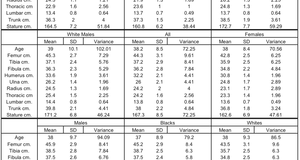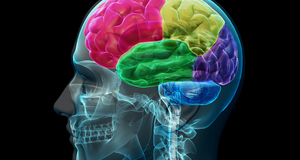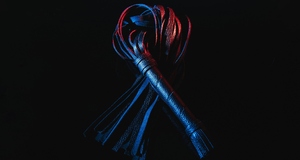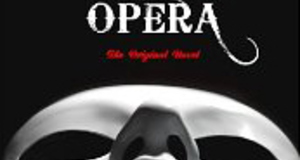Featured Article:Phantom-Limb Pain: Causes and Treatment Options
By
2014, Vol. 6 No. 11 | pg. 2/2 | « 2: Main Phantom-Limb Pain Treatment MethodsThe obvious motivation for research aimed at identifying the primary causes of Phantom-limb pain is the prospect of devising effective treatment methods that directly target the source of phantom-limb pain. In the traditional approach, the common treatment strategies are grouped into three categories, which include pharmacological treatment (medical), supportive non-pharmacological non-invasive treatment (non-medical) and invasive treatment (surgical) (Knotkova et al. 2012: 40; Nikolajsen and Jensen 2001: 112). The relative magnitude of phantom-limb pain is different for every patient and can range from mild to practically unbearable. In many cases, pharmacological treatment is not sufficient to provide satisfactory pain relief. In such cases, medical and supportive non-medical treatment is frequently offered in tandem in order to enhance the effectiveness of applied strategy (Knotkova et al. 2012: 43). In some extreme cases, surgical intervention can be used as a last resort. However, the number of invasive treatment methods is constantly decreasing since their effect is rarely long-lasting, and therefore, rather unsatisfactory. Besides, the high risk of side effects, common for all destructive surgical procedures, often makes the application of such methods unjustifiable. Sometimes, invasive treatment can even worsen patients' condition (Knotkova et al. 2012: 44; Nikolajsen and Jensen 2001: 112). In the previous section it was suggested that the focus has recently shifted to the central and peripheral nervous systems as the primary sources of phantom-limb pain. Henceforth, the vast majority of medical, non-medical and surgical treatment strategies directly (and sometimes indirectly) target these networks. This section will describe the main treatment methods available for patients with Phantom-limb pain grouping them according to the classification outlined above.2.1. Pharmacological TreatmentPractically all patients with phantom-limb pain who undergo any sort of treatment receive medication that is meant to either target the diagnosed source of the painful sensations with a view to eliminating the problem or at least decreasing its severity, or provide patients with a temporal relief until further, non-medical strategies are applied. As has already been emphasized in this paper, the approach to investigating the phenomenon of phantom-limb pain has shifted from focusing on psychological aspects of this issue to viewing the central and peripheral nervous systems as the primary venues underlying the majority of phantom-limb pain cases. As each case of phantom-limb pain is different, the number of available pharmaceutical drugs is quite impressive and it is still increasing. Among the more commonly used aids are acetaminophen and nonsteroidal anti-inflammatory drugs, antidepressants, anticonvulsants, sodium channel blockers, tramadol and others like barbiturates, neuroleptics, muscle relaxants, opioids, calcitonin and ketamine. Unfortunately, not all of them have been shown to yield satisfactory results and some do not even exceed the placebo effect. However, controlled studies have confirmed high effectiveness of the last three agents enumerated in this short list (Flor 2002: 186; Knotkova et al. 2012: 40-43). These groups of pharmacological agents regard the nervous system as the main source of phantom-limb pain and are used to alter different aspects of its functioning. A serious problem concerning the use of these types of drugs is a high risk of side effects. Therefore, medical practitioners often try to reduce this risk by offering their patients softer drugs in connection with other non-medical treatment strategies to find the optimal balance between the risk of adverse effects and the effectiveness of the treatment. 2.2. Supportive Non-Pharmacological Non-Invasive IreatmentAs the name suggests, supportive treatment is viewed as secondary to other types of treatment (usually pharmacological), and is used to diversify applied strategies, thus increasing the overall chance for patients’ recovery. However, some methods have recently gained attention and popularity, and are becoming the leading approaches in treating phantom-limb pain. Just like in the case of medical drugs, the range of available supportive non-pharmacological non-invasive treatment methods is wide. They differ in terms of effectiveness, complexity and accessibility. Some methods use advanced technologies, while others can be applied domestically, without any expert’s assistance. Many of them attend to the nervous system and try to eliminate the causes of phantom-limb pain. Therefore, some strategies aim at reversing (usually indirectly) the cortical remapping which is universally observed after limb amputation; other methods focus on blocking or normalizing the peripheral input. Among the treatment approaches that can be classified in this category are (repetitive) transcranial magnetic stimulation of the somatosensory cortex, peripheral transcutaneous electrical nerve stimulation, physical therapy, motor imagery, reflexology, psychotherapy, hypnosis, myoelectric prosthesis or visual feedback therapy (Knotkova et al. 2012: 39-44). The last method, also known as the mirror-box therapy, was developed by Vilayanur S. Ramachandran and is now probably the best recognized and the most characteristic treatment strategy for the cases of phantom-limb pain. The popularity of this approach stems from its relative simplicity. It is applicable when pre-amputation pain in a paralyzed limb is carried over to the phantom following the operation. The technique uses a mirror to create an impression that the phantom is moving together with the other limb. The mirror box is designed in such a way that the reflection of the healthy limb creates an impression that the phantom is “resurrected.” Thus, by moving their healthy limbs, patients can receive the visual feedback that their phantom is moving again, which can allow them to exercise their previously paralyzed extremities. This effect has been shown to effectively alleviate painful phantom sensory experiences (e.g. Ramachandran 2007; Ramachandran and Hirstein 1998: 1620). Repetitive training can result in the disappearing of the phantom limb together with the pain (Ramachandran 2007). After the initial success, a modified version of the visual feedback therapy has been designed in which a mirror is used together with a shrinking lens. It has been shown that optically shrinking the “resurrected” phantom results in diminishing the painful sensations as well (Ramachandran et al. 2009: 1). 2.3. Invasive TreatmentThe third group of available treatment methods comprises of different types of invasive surgical interventions. Such strategies are less and less frequent, as other non-invasive methods yield promising results. Invasive treatment is accompanied by a relatively high risk of side effects, which causes such methods to be viewed as solutions of a last resort. As was the case with the previously discussed groups of treatment methods, also the majority of the surgical procedures used in treating phantom-limb pain focus on peripheral and central nervous systems. Among the destructive methods commonly mentioned in the literature are nerve blocks, invasive neuromodulation, stump revision, rhizotomy, cordotomy, lobectomy, tractotomy, dorsal column stimulation, deep brain stimulation and spinal cord stimulation (Flor 2002: 187; Knotkova et al. 2012: 44-45; Subedi and Grossberg 2011: 4). Unfortunately, the risk of adverse side effects which is highest for these types of treatment strategies does not go together with the highest success rates. According to Knotkova et al. (2012: 44), surgical interventions “yield disappointing long term results” due to the complications following the treatment as well as “a high rate of recurrent pain.” However, in some extreme cases, there are no other options to relieve patients’ excruciating pain, and invasive methods have to be applied to improve their quality of life. ConclusionRecent research into the causes of painful sensations connected with phantom limbs has shifted the focus from regarding phantom-limb pain as a psychological condition to viewing the nervous system as the primary source of pain. As a result, the peripheral and central nervous systems are the focal point of current research into phantom-limb pain and other phantom phenomena. There are currently three major treatment routes for dealing with phantom-limb pain: pharmacological treatment, supportive non-pharmacological non-invasive treatment, and invasive treatment. Unfortunately, none of the available methods guarantees 100% success, but the increasing number of options available to patients has led to increasing rates of total recovery or partial pain relief in the treatment of phantom-limb pain. Further investigation is still needed to provide a more thorough understanding of the causes of painful sensation in amputated limbs, as well as to improve treatment techniques and to offer uncover preventive measures to reduce the risk of pain appearing before and/or immediately after amputation. Research into the possiblility of inhibiting the initiation of processes observed in amputees after operation, such as cortical reorganization and sprouting of neuromas, could also provide compelling new options for dealing with phantom-limb pain. ReferencesFlor, Herta. 2002. “Phantom-limb pain: Characteristics, causes, and treatment,” Lancet Neurology 1, 3: 182-189. Flor, Herta, Thomas Elbert, Stefan Knecht, Christian Wienbruch, Christo Pantev, Niels Birbaumer, Wolfgang Larbig and Edward Taub. 1995. “Phantom-limb pain as a perceptual correlate of cortical reorganization following arm amputation,” Nature 375: 482-484. Knotkova, Helena, Ricardo A. Cruciani, Volker M. Tronnier and Dirk Rasche. 2012. “Current and future options for the management of Phantom-limb pain,” Journal of Pain Research 5: 39-49. Melzack, Ronald, Robyn Israel, Rene´e Lacroix and Geoffrey Schultz. 1997. “Phantom limbs in people with congenital limb deficiency or amputation in early childhood,” Brain 120: 1603-1620. Nikolajsen Lone and Troels S. Jensen. 2001. “Phantom limb pain,” British Journal of Anaesthesia 87, 1: 107-116. Ramachandran, Vilayanur S. 2007. “3 clues to understanding your brain.” (TED talk video, Oct. 2007). (http://www.ted.com/talks/vilayanur_ramachandran_on_your_mind.html) (date of access: 03 Dec. 2013). Ramachandran, Vilayanur S., David Brang and Paul D. McGeoch. 2009. “Size reduction using Mirror Visual Feedback (MVF) reduces phantom pain,” Neurocase 15, 5: 357-360. Ramachandran, Vilayanur S. and William Hirstein. 1998. “The perception of phantom limbs. The DO Hebb lecture,” Brain 121: 1603-1630. 12 Subedi, Bishnu and George T. Grossberg. 2011. “Phantom limb pain: Mechanisms and treatment approaches,” Pain Research and Treatment. (http://www.hindawi.com/journals/prt/2011/864605/) (date of access: 03 Dec. 2013). Suggested Reading from Inquiries Journal
Inquiries Journal provides undergraduate and graduate students around the world a platform for the wide dissemination of academic work over a range of core disciplines. Representing the work of students from hundreds of institutions around the globe, Inquiries Journal's large database of academic articles is completely free. Learn more | Blog | Submit Latest in Health Science |


















